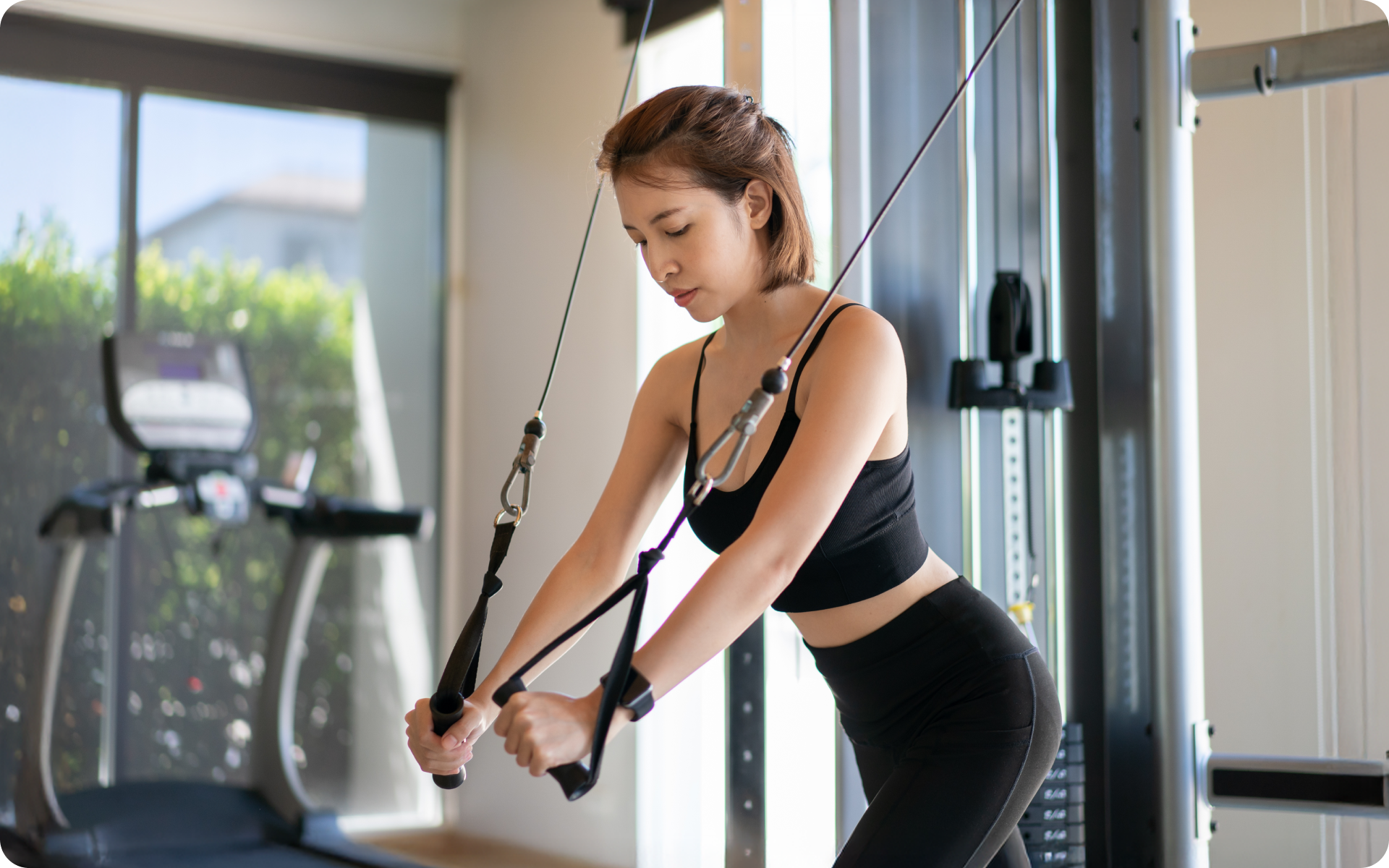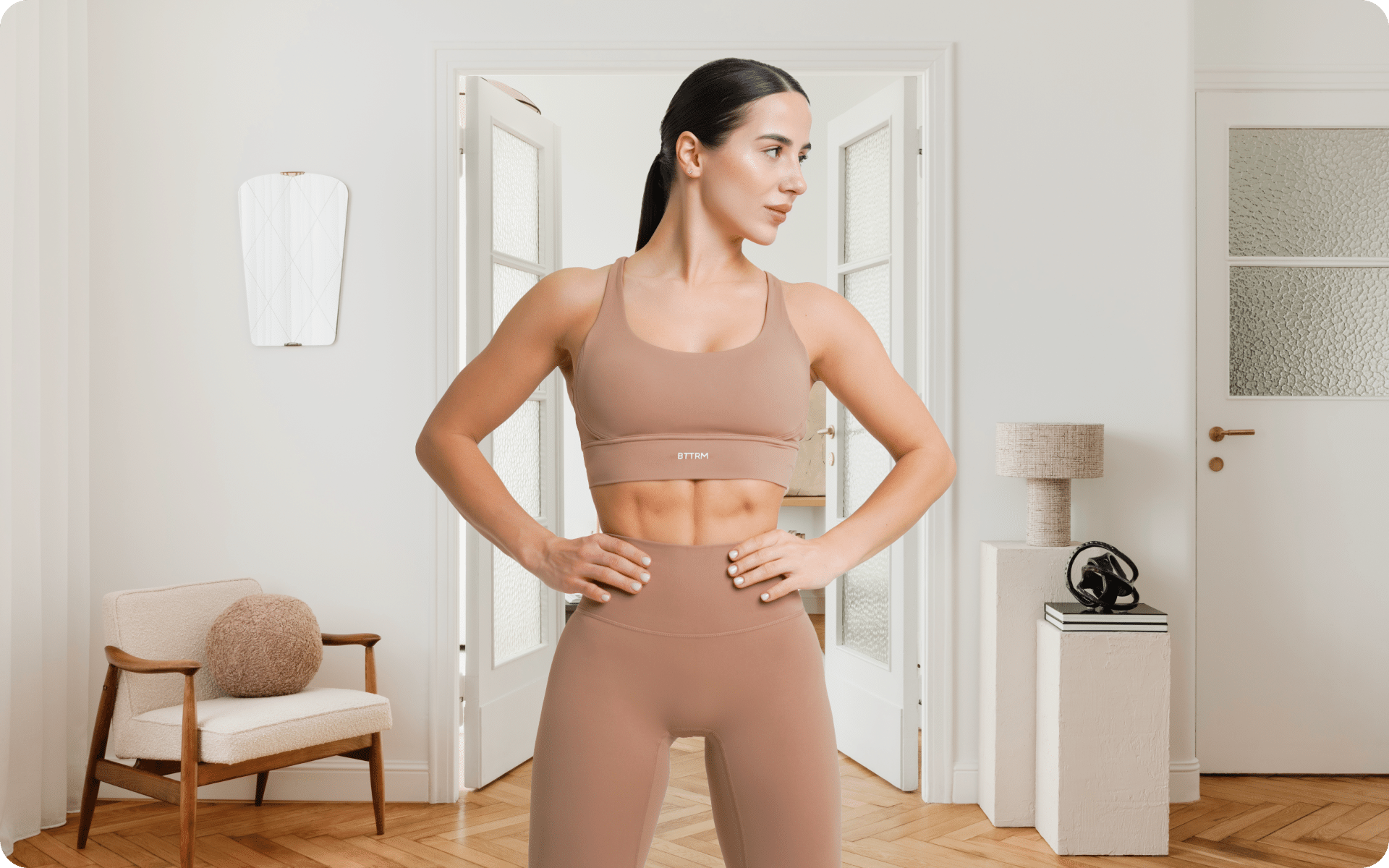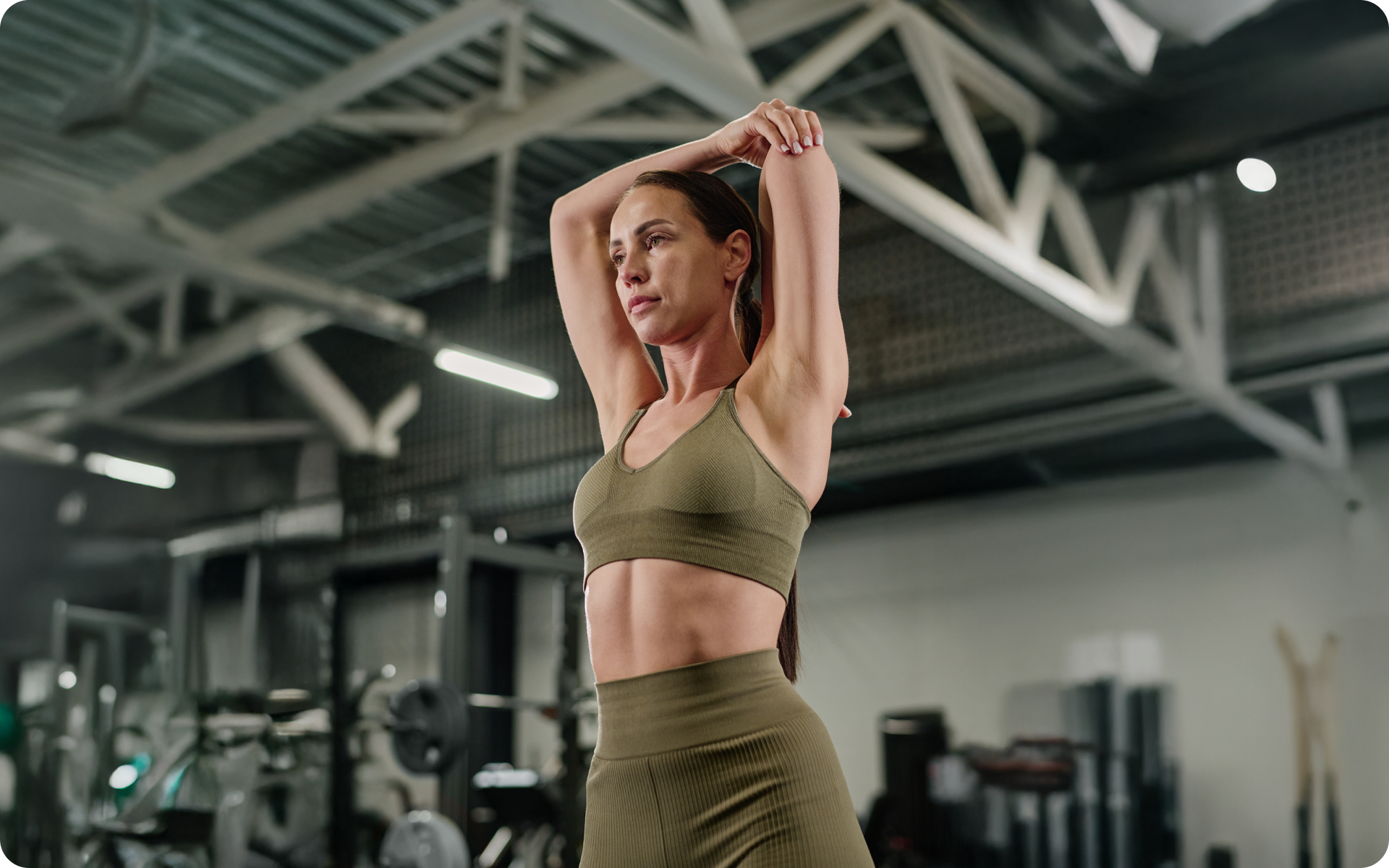After a while of trudging away on the treadmill or lifting weights in your gym’s fluorescent-lit, air-conditioned environment, you may be craving a change. The great outdoors offer a refreshing alternative to indoor workouts, one that comes with an array of health benefits and a sense of adventure.
This article explores these benefits, from the psychological boost provided by nature to the physical upsides of varied terrain. It also offers practical tips for those ready to swap their gym shoes for hiking boots or their yoga mats for sandy beaches.
Whether you’re an exercise enthusiast looking to diversify your routine or a beginner seeking a non-intimidating entry point into fitness, outdoor workouts could be your answer.
Is It Better To Workout Outdoors?
Exercising outdoors, in particular, offers some unique advantages over indoor workouts:
1. Enhanced Mood and Reduced Depression
Outdoor exercise can have significant positive effects on mood and mental health. Exposure to natural sunlight helps your body produce vitamin D, which is linked to improved mood and the potential for a reduced risk of depression (18).
When we exercise outside we also have more opportunities to connect with nature and experience the calming effects of being outdoors.
Studies have shown that even a short walk in a green space can help reduce stress and anxiety(4). The sights, sounds, and smells of nature work together to calm our minds, helping us to relax and focus.
This is particularly beneficial for those who live in urban areas and may not have regular access to nature.
2. Better Concentration and Cognitive Function
Working out outside can also help improve your concentration and cognitive function. The varied, unpredictable nature of outdoor terrain requires greater mental engagement than the predictable, controlled environment of a gym(8).
This can stimulate your brain in different ways and improve your overall cognitive function.
Additionally, research has shown that spending time in nature can positively improve working memory and attention span (12). Whether it’s navigating a hiking trail or just paying attention to your surroundings while jogging in a park, the cognitive demands of outdoor exercise can be beneficial for brain health.
3. Increased Motivation and Enjoyment
Outdoor workouts may help increase motivation and enjoyment (7). The ever-changing scenery provides a welcome distraction from the fatigue that can accompany exercise, making your workout seem less strenuous and more enjoyable.
In addition, a study published by the American Chemical Society found that people who exercise outdoors are more likely to stick to their exercise routine than those who work out indoors (2).
The natural environment can serve as a powerful motivator, encouraging you to push through physical challenges and reach your fitness goals.
Intense sweat sessions, working weight loss tips, lip-smacking recipes come in one package with the BetterMe app. And all of it is at your fingertips, start transforming your life now!
4. Greater Calorie Burn
Some Outdoor workouts can involve more strenuous activities like trail running or mountain biking, which require a greater amount of energy than stationary or controlled indoor exercises. This increased level of physical effort can result in a higher calorie burn.
Furthermore, environmental factors such as wind resistance and changes in terrain can bring an additional increase in the intensity of your workout, leading to greater energy expenditure(1). That said, if weight loss or improved fitness is your goal, outdoor workouts can be an effective way to boost your calorie burn.
5. Improved Immune Function
Spending time outdoors and being active can also help strengthen your immune system. Research has shown that regular physical activity can enhance circulation, promote antibody production and positively influence the impact of bacterial infections. Further to this, these factors can help reduce your chance of getting a cold, flu, or other illnesses(10).
Apart from this, being in the natural environment exposes you to a variety of bacteria that can help to strengthen your immune system. This exposure to diverse microorganisms can help build resistance and enhance immune function, keeping you healthier in the long run (14).
6. Better Sleep
Exercise is known to help improve sleep quality, and outdoor exercise, may be especially beneficial. Exposure to natural light during your workout can help regulate your body’s internal “biological clock,” which can help you sleep more soundly at night(5).
Even more, the stress-reducing benefits of outdoor workouts can also contribute to better sleep. By reducing anxiety and promoting a state of calm, outdoor exercise can make it easier for you to fall asleep and stay asleep through the night.
7. Improved Social Connections
Outdoor workouts can also have a positive impact on your social and emotional well-being. Working out with friends or family members is often more enjoyable, motivating, and productive than exercising alone.
As a plus, the natural environment provides plenty of opportunities for conversation that are lacking in a traditional gym setting.
With this in mind, if you’re looking to connect with others while increasing your physical activity, outdoor workouts can be a great way to do both.
What Workout Can You Do Outside?
There is a plethora of exercises you can perform outdoors, ranging from low-intensity activities suitable for beginners to high-intensity workouts for fitness enthusiasts. Let’s explore some of these options to inspire your next outdoor workout.
Walking
Walking is a low-impact outdoor activity that is perfect for beginners or those looking for a light cardio workout. Walking in parks or nature trails adds an element of visual pleasure to your workout, making it more enjoyable.
As far as outside workouts go, no equipment is needed – just a pair of comfortable shoes and you’re good to go.
Below are some tips for making the most of your outdoor walk:
- Set a goal to walk for at least 20 minutes each day.
- Use dynamic stretching before walking to help warm up your muscles and improve your range of motion.
- Carry a water bottle with you to stay hydrated throughout the day.
- Wear comfortable, breathable clothing depending on the weather and proper footwear.
- Choose routes that have some inclines to increase the intensity of your workout.
- Alternate between brisk walking and slower jogging throughout your walk.
Running
Running is an excellent aerobic exercise that strengthens the heart, improves lung capacity, and can aids in weight loss(7). Beginners can start with a mix of running and walking and gradually increase the running intervals.
Among outdoor cardio workouts that don’t require equipment, running is one of the most effective.
Here are some tips to help you get started:
- Begin slowly with a few minutes of running and several minutes of walking (i.e., a walk/run interval program).
- Increase your running intervals gradually over time as your fitness level improves.
- Use dynamic stretching before running to help warm up your muscles and improve your range of motion.
- Drink water before, during, and after your run to stay hydrated throughout the day.
- Wear comfortable clothing and shoes that are suitable for running in different conditions (i.e., rain, wind, etc.).
- Choose routes with some hills or inclines to increase the intensity of your workout.
- Incorporate short sprints into your running routine to improve speed and endurance.
Cycling
Cycling is a great low-impact outdoor workout that targets your lower body and core muscles. It also improves cardiovascular fitness and joint flexibility (6). If you need to do leg workouts outside and have access to a bike, cycling is the perfect option.
Follow these tips for an effective and enjoyable outdoor ride:
- Wear appropriate clothes and shoes (e.g., helmet, padded shorts, etc.)
- Choose a route that is safe and free from traffic or obstacles
- Start slowly with flat terrain until you gain experience
- Increase the intensity by choosing routes with hills or inclines
- Maintain a steady pace and shift gears when necessary
- Drink water before, during, and after your ride to stay hydrated
- Incorporate sprints or intervals into your cycling routine for an extra challenge
Yoga
Practicing yoga outdoors adds an element of tranquility to your workout. Yoga can improve flexibility, balance, and strength, and outdoor yoga can help you connect more deeply with your environment(9).
However, unlike walking and running, both of which are easy to do anywhere, you may need a space with a flat surface and some shade when doing yoga outside. Here are some tips for making the most of your outdoor yoga sessions:
- Choose an area that is away from noise and distractions
- Wear comfortable clothing that allows freedom of movement
- Place a mat or towel down beneath you for grip and comfort
- Incorporate breathing exercises into your session to help you relax
- Start with simple poses and gradually increase the intensity over time
- Take breaks whenever necessary to rest, hydrate, or catch your breath.
Read more: Thigh Workout Guide: 7 Effective Exercises for Building Leg Strength
Swimming
If you’re lucky enough to live near a lake, river, or sea, swimming can be a great full-body workout. It also offers a unique way to cool off on a hot day. For people with limited mobility or joint issues that require a low-impact option, swimming is an ideal choice.
Try swimming continuously for 20-30 minutes, alternating between different strokes for variety.
Hiking
Hiking in the great outdoors exercises your body and mind. It can help strengthen your legs, improve balance, and help you appreciate the beauty of nature(11). Start with a trail that matches your fitness level, gradually moving to steeper or longer routes.
Kickboxing
Outdoor kickboxing is a high-intensity workout that combines strength training and cardiovascular fitness. It’s a great way to improve your agility and coordination(16). To perform a kickboxing outdoor workout you’ll need to find a safe, grassy area, away from objects. You may also want to consider investing in a pair of gloves and protective gear.
High-Intensity Interval Training (HIIT)
High-Intensity Interval Training (HIIT) workouts can pack a lot of punch into a short amount of time. These workouts are highly efficient, helping to increase your fitness level and burn calories even after the workout is over(13).
Here’s a sample outdoor HIIT workout:
Warm-Up
Start with a 5-minute warm-up to prepare your body for the intense workout ahead. This could include light jogging or brisk walking, along with dynamic stretches such as leg swings and arm circles.
HIIT Session
The main workout is a circuit of five exercises, each performed for 30 seconds with maximum effort, followed by a 30-second rest. After completing all five exercises, take a 1-minute rest, then repeat the circuit three more times.
-
Squat Jumps
Start in a squat position, then jump up as high as you can, landing softly back in the squat position.
-
Push-Ups
Start from a high plank position and lower your body until your chest nearly touches the ground, then push back up to the starting position.
-
Mountain Climbers
In a high plank position, alternately pull your knees towards your chest as fast as you can.
-
Burpees
From the standing position, drop into a squat, kick your feet back into the plank, lower your chest to the ground, and then reverse the move, ending with a jump.
-
Lunge Jumps
Start in a lunge position, then explosively jump up and switch legs in mid-air, landing in a lunge position with the opposite leg forward.
- Cool Down
End the workout with a 5-minute cooldown, such as a slow walk to gradually lower your heart rate. Incorporate static stretches to relax your muscles, like standing quad stretch and forward bend.
Whether you’re looking to simply pep up your fitness routine, jazz up your diet with mouth-watering low-calorie recipes or want to get your act together and significantly drop that number on your scale – BetterMe app has got you covered! Improve your body and revamp your life with us!
Circuit Training
Circuit training is a series of exercises performed one after another, with minimal rest in between. It provides a full-body workout and keeps things interesting with a variety of exercises.
Sample workout:
- Set up five to seven stations in a local park or your backyard.
- Each station might include an exercise like push-ups, lunges, squats, skipping rope, or sit-ups.
- Rotate through the stations with 30 seconds of intense effort at each, followed by a 15-second rest before moving on to the next exercise.
- Complete the circuit two to three times for a total-body workout that combines strength and cardio.
- To add an extra challenge, include uphill sprints or stair climbing in your circuit.
Can You Build Muscle With an Outdoor Gym?
Yes, you can certainly build muscle with an outdoor gym. Outdoor workouts often involve bodyweight exercises, which are known for their ability to enhance strength and build muscle.
However, the key is to ensure that there is a progressive overload in your workouts, meaning that over time, you are gradually increasing the intensity, frequency, volume or duration of your exercises to continuously challenge your muscles.
To build muscle, exercises should be performed at a moderate to high intensity working against resistance, such as compound strength-based movements. These can include push-ups, pull-ups, dips, squats, lunges, and various plyometric exercises(15).
The use of outdoor gym equipment, like monkey bars and parallel bars, can also boost your strength training routine.
Another way to increase the difficulty and effectiveness of your workouts is to incorporate resistance bands or weighted vests into your outdoor workouts. This will further challenge your muscles, leading to greater muscle growth over time.
Why Is Working Out Outside Harder?
Exercising outdoors might feel more challenging due to several factors. First, the variability of the terrain can make activities more strenuous. For instance, running on uneven ground or hiking up a hill demands more from your body than running on a treadmill or using a stair machine.
This can engage different muscles and require more energy, making the workout feel harder.
Second, weather conditions can significantly influence the difficulty of outdoor workouts. High temperatures and humidity can increase the strain on your body and make exercises feel tougher.
Conversely, colder temperatures can make it harder for your body to warm up, and wind can add resistance to your workout.
Additionally, when exercising outdoors you don’t have the control over your environment that you do in a gym setting. There are no machines to adjust the difficulty level, no air conditioning to control temperature, and no fans to cool you down. This unpredictability and lack of control can make outdoor workouts feel more challenging.
Lastly, working out outside can also be mentally more demanding. Without the distractions of a TV or other gym-goers, you might be more aware of the physical effort you’re putting in, which can make the workout seem harder.
Yet, this heightened awareness and mental challenge can also lead to greater satisfaction and a sense of accomplishment after the workout.
Read more: Your Flat Tummy Workouts Just Got Better With This Guide
FAQs
How do I plan an outdoor workout?
Planning an outdoor workout involves several steps. First, choose a location that suits your needs, such as a park, beach, or even your own backyard. Next, decide on the type of workout you want to do – this could be running, cycling, bodyweight exercises, or a HIIT circuit, for example.
Make sure to include a warm-up to prepare your body, and a cool-down to help your muscles recover. Remember to pack essentials like water, sunscreen, and any equipment you need.
Why is outdoor better than indoor?
Outdoor workouts can offer benefits that indoor workouts can’t. The varied terrain can challenge your body in new ways, improving your balance and agility. Exercising in nature can also boost your mood, reduce stress, and improve mental wellbeing. Plus, outdoor workouts often require no gym membership or equipment, making them a cost-effective choice.
What time is best to work out outside?
The best time to work out outside depends on your personal schedule, the weather, and your preferred type of exercise. Early morning is a great time to avoid crowds and enjoy cooler temperatures, while afternoon workouts can benefit from warmer weather and daylight.
Avoid exercising in extreme heat to prevent dehydration and heat stroke. Ultimately, the best time is whenever you can consistently fit the workout into your schedule.
The Bottom Line
As you can see, there are countless ways to get fit outdoors. From low-impact activities such as walking and yoga to high-intensity workouts like running and cycling, the possibilities are endless.
With this knowledge in hand, take advantage of your local parks and nature trails, enjoy the fresh air, and reap all the health benefits that come with outdoor exercise.
DISCLAIMER:
This article is intended for general informational purposes only and does not serve to address individual circumstances. It is not a substitute for professional advice or help and should not be relied on for making any kind of decision-making. Any action taken as a direct or indirect result of the information in this article is entirely at your own risk and is your sole responsibility.
BetterMe, its content staff, and its medical advisors accept no responsibility for inaccuracies, errors, misstatements, inconsistencies, or omissions and specifically disclaim any liability, loss or risk, personal, professional or otherwise, which may be incurred as a consequence, directly or indirectly, of the use and/or application of any content.
You should always seek the advice of your physician or other qualified health provider with any questions you may have regarding a medical condition or your specific situation. Never disregard professional medical advice or delay seeking it because of BetterMe content. If you suspect or think you may have a medical emergency, call your doctor.
SOURCES:
- A role for high intensity exercise on energy balance and weight control (1998,hih.gov)
- Benefits to Performance and Well-Being of Nature-Based Exercise: A Critical Systematic Review and Meta-Analysis (2021,pubs.acs.org)
- Benefits of Physical Activity (2023,cdc.gov)
- Can Even a Small Amount of Greenery Be Helpful in Reducing Stress? A Systematic Review (2022,nih.gov)
- Circadian Rhythms (2023,nih.gov)
- Cycling – health benefits (2013,betterhealth.vic.gov.au)
- Effects of Aerobic Exercise on Lung Function in Overweight and Obese Students (2011,nih.gov)
- Effects of Physical Exercise on Cognitive Functioning and Wellbeing: Biological and Psychological Benefits (2018,nih.gov)
- Exploring the therapeutic effects of yoga and its ability to increase quality of life (2011,nih.gov)
- Exercise and Respiratory Tract Viral Infections (2010,nih.gov)
- Hiking (2018,nih.gov)
- Interacting with Nature Improves Cognition and Affect for Individuals with Depression (2012,nih.gov)
- Is high-intensity interval training a time-efficient exercise strategy to improve health and fitness? (2014,nih.gov)
- Nature Exposure and Its Effects on Immune System Functioning: A Systematic Review (2021,nih.gov)
- Physical Training Programs for Tactical Populations: Brief Systematic Review (2023,nih.gov)
- The effects of five weeks of kickboxing training on physical fitness (2014,nih.gov)
- The Effects of Outdoor versus Indoor Exercise on Psychological Health, Physical Health, and Physical Activity Behaviour: A Systematic Review of Longitudinal Trials (2023,nih.gov)
- Vitamin D and Depression: A Critical Appraisal of the Evidence and Future Directions (2020,nih.gov)













